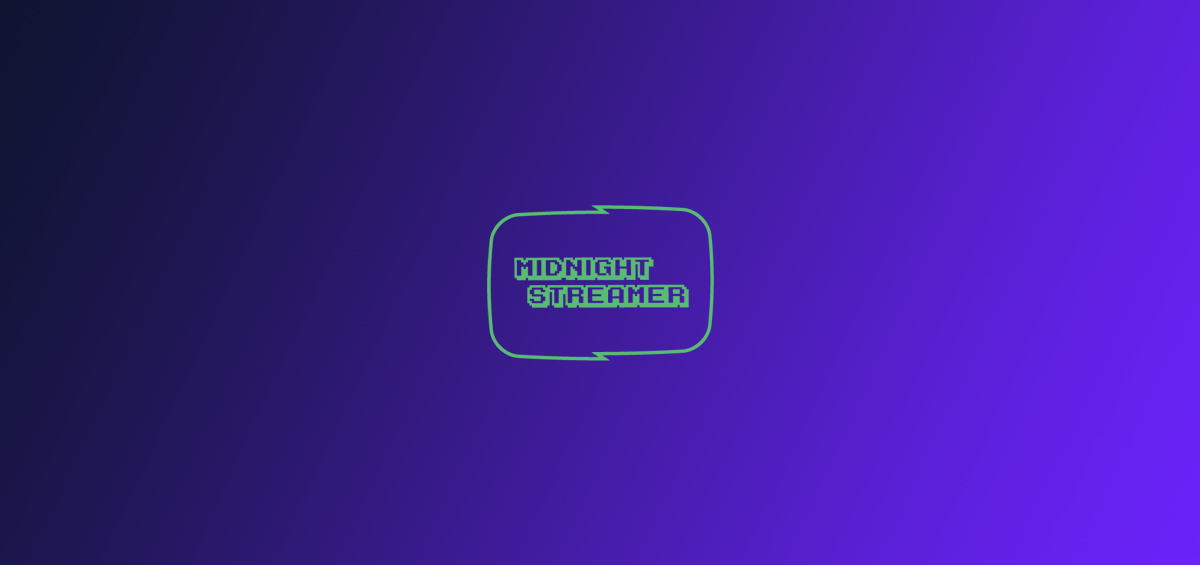-
Posts
133 -
Joined
-
Last visited
-
Days Won
10
Everything posted by midnightstreamer
-

Stream analysis for ffmpeg mapping
midnightstreamer replied to Alberto Palau's topic in New Features Suggestions
It's an interesting feature. Probably it will be included in the next 2 releases. -
You do need to update the "ca" in the database table "servers" with the content of your new CA, trusted or not. The content of the "ca" in the db is used to validate the LBs. Since the majority of users will not install a trusted certificate, this is an effective way to protect main server/LBs communication from man-in-the middle attacks with self-signed certificates. As a collateral effect even users with a trusted cert will have to update the db. We are receptive to all issues we are informed of. Regarding your proposal to install certificates in an easy way through the panel I think it's overkill for these reasons: You have to do it only once Few people need to do it You can do it on your own by literally copying 3 files and updating a database entry It would overengineer the panel Why not adding an easy way to install openvpn, generate certificates and configs then?
-

Stream analysis for ffmpeg mapping
midnightstreamer replied to Alberto Palau's topic in New Features Suggestions
Not sure what you mean. Adding a multiple selection for custom MAPs? -
If you change the default cert files created during installation you need to update the "ca" attribute too in the "servers" database table and ca file on load balancers otherwise load balancers will not work properly. The "ca" (certificate authority) attribute is used by the main and load balancers to validate each other to avoid man-in-the-middle attacks when using self-signed certificates. If you have installed trusted certificates you are not vulnerable to man-in-the-middle attacks but you still need to make the above mentioned changes.
-
All the previous is valid for normal, no Proxy streams.
-
There is no need to check for log error files in /streams. You can directly click the log icon inside the stream settings in the panel. All type of input streams are handled the same way. MS has an anti-drop function. If your source fails it will try to recover it. Try to manually kill your ffmpeg instances: killall -9 ffmpeg and immediately after check whenever they are started again: ps -A | grep ffmpeg you will see ffmpeg is started immediately after an ffmpeg exit, usually caused by the source stream not being available for whatever reason, poor network, source down etc. If the source is down for more than 30s and you set just one stream source (no backups) you have 3 scenarios. If you set "Show Monoscope / Blank Screen on Stream Interruption" to Monoscope, a monoscope will be shown until the source comes back online. If you set it to Blank, a black screen will be shown until the source comes back online. If you set it to Don't Show, the last good stream segment will be repeated until the source comes back online. So clients will not be disconnected if source goes down even for prolonged periods. The monoscope and blank videos are h264, aac encoded and you can find them in: /home/midnightstreamer/iptv_midnight_streamer/data If you do set stream backups you can choose if they are pulled simultaneously or only if the previous stream fails. If they are pulled simultaneously the stream will quickly switch to the working one since it's already active so there are zero possibilities of downtime. If they are not pulled simultaneously, the backups will be probed sequentially until a working backup is found. If you set "Use Priority in Backup Sources" to Yes, the system will always check if the main stream is online again and it will switch to it if it is.
-
Hello MS opens literally every type of stream since it's ffmpeg based. If you set your streams as Proxy, the source MUST be MPEG-TS. HLS doesn't work with Proxy. For troubleshooting stream issues your best best is to check the stream log. Log icon on the top-right of the stream info-box. There you can check for forbidden or 404 not found errors.
-
Thank you for your suggestions Twep. We are working on V5 which will be completely redesigned. More sexy themes and stuff.. 😏 There will be few more V4 updates till V4 is merged with the V5 branch.
-

Custom react material design?
midnightstreamer replied to kjoule's topic in New Features Suggestions
2~3 months -

Custom react material design?
midnightstreamer replied to kjoule's topic in New Features Suggestions
In v5 the UI will be completely revolutionized and it will be based on vue though and not react. We *hate* table pagination 😀. We worked so hard on infinite scroll that returning to paginations is unthinkable. -
By popular demand, MidnightStreamer pro's trial license has been extended from 3 to 30 days, giving you time to explore more panel features. You can reactivate your existing trial license by manually removing the license file /home/midnightstreamer/iptv_midnight_streamer/license from your server and by refreshing your admin area in your browser twice.
-
It really depends on your motherboard. Try to list the GPUs inside the /dev/ directory.
-
Not for now but we plan a version 2.0 for android and ios. PiP and multi-logins will be included.
-
Hello MIDNIGHTSTREAMER -> Migrate Fill the connection parameters of your old database and click Transfer.
-
Since we get many tickets asking if we have fixed the XC security flaws we think it's time for a clarification. MidnightStreamer has been programmed from the ground up using the latest CodeIgniter PHP framework. MS and XC have nothing in common apart from the GUI and terminological similarities. However MS, in addition to having its own API, implements the XC API for compatibility reasons. If XC has some security flaws in its streaming engine and admin area, it's NOT a MS problem. Every professional application should be framework based. Frameworks are best practice because they prevent security vulnerabilities on script and database level. We have chosen CodeIgniter because of its lightweightness and scalability. It is not our habit to denigrate the work of others but for the record we must clarify the programming features of the XC core. XC has been programmed in PHP without the use of a framework. This results in an unmaintainable and messy code with trillions of potential security holes. On the other hand, framework-based applications are more reliable and faster to code. We hope to have unraveled the doubts about the differences between MS and XC.
-
Nope. Please open a ticket.
-
Hi! connections are displayed in Main -> Client Connection Log where all connections are shown, even the concurrent connections coming from the same user from different IPs. I'm not sure what SSL setting you changed but SSL is configured by default in the nginx.conf bundled with midnightstreamer: server { listen 8000; index index.php index.html index.htm; root /home/midnightstreamer/iptv_midnight_streamer/wwwdir/; server_tokens off; chunked_transfer_encoding off; listen 8001 ssl;ssl_certificate server.crt;ssl_certificate_key server.key;ssl_protocols SSLv3 TLSv1 TLSv1.1 TLSv1.2;ssl_ciphers HIGH:!aNULL:!MD5;
-

Load balancing servers version after update?
midnightstreamer replied to roket's topic in General Discussion
Go to System, Database manager, SQL Query: SELECT id, version from servers; or System, Security Center and check if you have suspicious files on your LBs. If you have a lot of them probably your LB hasn't been updated yet. If for whatever reason your LB will not update, full rebuild it from the servers list. -

Load balancing servers version after update?
midnightstreamer replied to roket's topic in General Discussion
After a panel update all LBs are updated within 5 min. Offline LBs also get updates when they come back online. -
There is a warning telling you to wait a few minutes for the installation to complete. Have you read it?
-
We are pleased to announce that the MidnightStreamer panel has moved from saas to on-premise, bringing with it a lot of benefits. Speed and security are just some of them.
-
Deal!
-
OK! In next release!
-
In next release!
-
What is Direct Streaming? Direct streaming is a new way of streaming (1 to many) that does not rely on FFmpeg. It uses a streaming engine written entirely in PHP to acquire the incoming stream and send it to clients. Future versions will be written in Rust to save even more CPU cycles. Here is a short list illustrating the pros and cons when using Direct Streaming: Pros: no audio-sync issues no need to restart streams under any circumstances (some FFmpeg streams need to be restarted periodically in order to work properly) ultra fast stream start when on-demand mode on, even from multiple hops (server1 (on-demand) -> server2 (on-demand) -> server3 (on-demand) -> server4 (on-demand) -> server5 (on-demand) in 4s<) no need to tweak the probe size setting can open sources without prebuffer (slow streams) in on-demand. Regular on-demand cannot open streams in time without or with a small prebuffer avoided issues caused by demuxing and remuxing (note: FFmpeg de/remuxes even if the stream is just copied without transcoding, while Direct streams forward the input to the output as-is) no issues when restreaming encrypted streams less CPU usage (-20% per stream on average compared to FFmpeg) Cons: no transcoding available no mapping available (audio and subtitle tracks cannot be selected) no archives available no video/audio codec and bitrate info is shown ➡️ In MidnightStreamer you can choose between both FFmpeg and Direct Streaming. It's up to you when to use one or the other.



